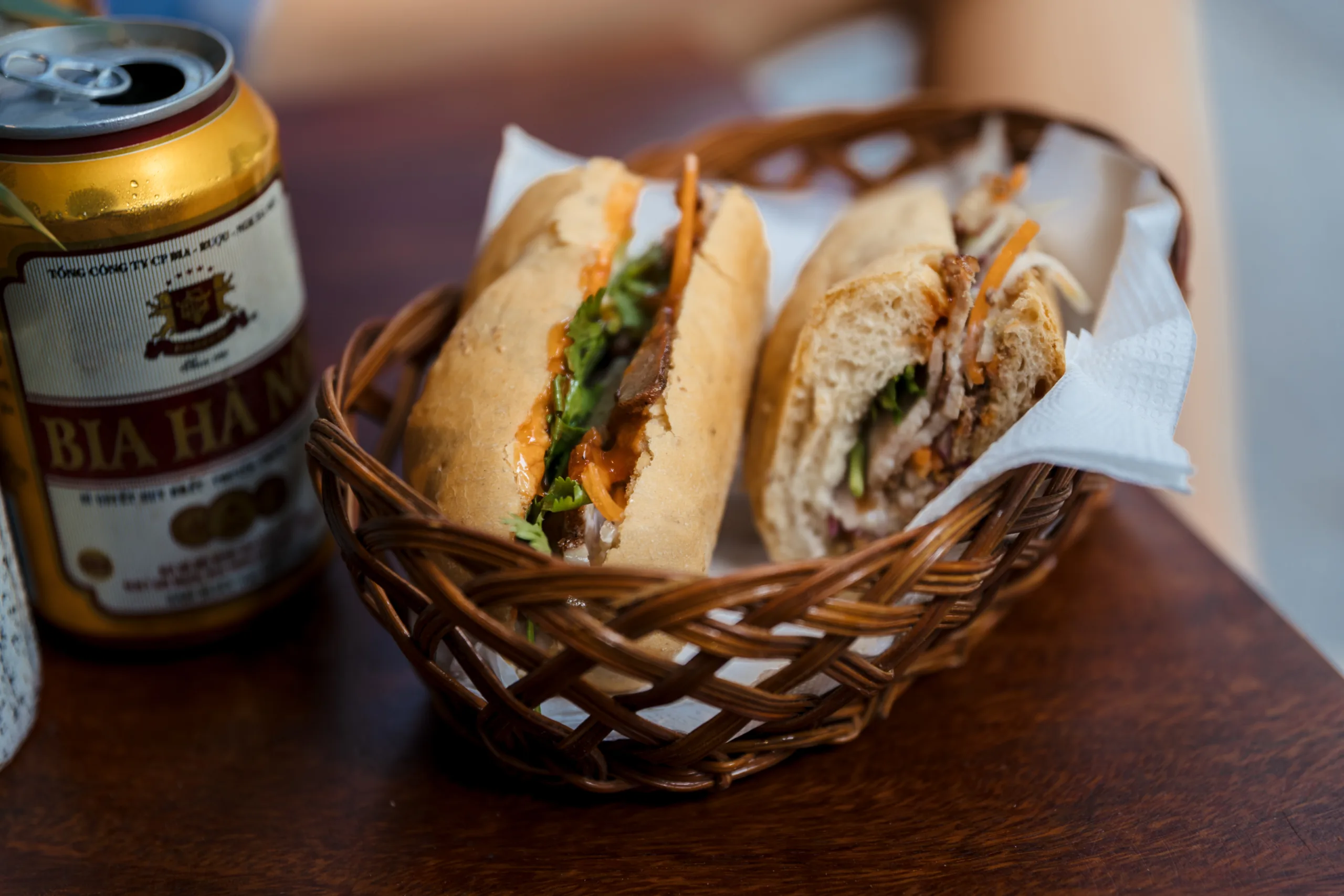Traveling is a great way to explore the world and have amazing experiences, however, if you have special dietary needs it can be hard to stay on track. If you are on a low FODMAP diet, it can seem near impossible to find meals that meet your dietary requirements while traveling.
Whether you are going away for business or pleasure, this article will provide insight on how to successfully navigate a low FODMAP diet while traveling. You will learn how to plan ahead and find delicious and satisfying meals that meet your dietary requirements. You will also learn tips for ordering food at restaurants and how to prepare snacks for long journeys.A Low FODMAP Diet is a dietary plan designed to reduce the intake of certain types of carbohydrates that can be poorly absorbed in the small intestine. These carbohydrates are known as Fermentable Oligosaccharides, Disaccharides, Monosaccharides and Polyols (FODMAPs). This diet helps to reduce digestive symptoms such as bloating, gas, and abdominal discomfort in people with irritable bowel syndrome (IBS).
Tips for Eating Low FODMAP While Traveling
Traveling with dietary restrictions can be overwhelming. If you have to follow a low-FODMAP diet, here are some tips to help make your travels easier and more enjoyable.
Plan Ahead
When you’re traveling, it’s important to plan ahead. Research restaurants in your destination that offer low-FODMAP options and make reservations if necessary. You may also want to look into food delivery services in the area or grocery stores where you can buy low-FODMAP food. Prepping your meals ahead of time can also be a great way to ensure that you have something safe and delicious to eat no matter where you are.
Bring Snacks
Having snacks on hand while traveling is always a good idea, but it’s especially important if you’re following a low-FODMAP diet. Bring individually packaged items like granola bars, dried fruit, nuts and seeds, applesauce cups, protein bars, and nut butter packets for easy snacking on the go.
Pack Nonperishable Items
If you’re going on an extended trip or camping out in the wilderness, packing nonperishable items like canned beans and legumes, nut butters, jerky, soup mixes that don’t contain any high FODMAP ingredients like garlic or onion powder, and shelf-stable boxed meals can be very helpful in making sure you have enough food throughout your trip.
Stay Hydrated
Staying hydrated while traveling is essential no matter what kind of diet you follow. Bring along a water bottle and refill it whenever possible so that you always have access to clean drinking water. If plain water isn’t your thing try adding sliced citrus fruits or cucumbers for flavor. You should also avoid any beverages with added sweeteners as they may contain high FODMAP ingredients like honey or agave syrup.
Packing a Low FODMAP Travel Kit
Travelling can be difficult for those with irritable bowel syndrome (IBS) or other digestive sensitivities, as it can be hard to find foods that don’t activate uncomfortable symptoms. If you have a low FODMAP diet, packing your own travel kit is essential to ensure you have safe and tasty food options wherever you go.
The first step when packing your low FODMAP travel kit is to stock up on all the little things that can make a meal more enjoyable, like condiments, spices, and sauces. Choose your favorite low FODMAP brands so you know they won’t cause any digestive distress. You may also want to pack some non-perishable snacks in case of emergency hunger attacks. Nuts are great because they are packed with fiber and protein and are easy to carry around.
Click here to preview your posts with PRO themes ››
When it comes to meals, try to stick with fresh produce that won’t spoil too quickly and which can be easily prepared on the go. Carrots, celery, apples, and bananas are all great options that won’t take up too much space in your bag. You may also want to pack some dried fruit or whole grain crackers for snacks throughout the day.
Finally, if you’re travelling by plane or train, it’s always a good idea to bring along some re-hydration sachets in case of stomach upset or dehydration due to motion sickness. This will help keep your energy levels up so you can enjoy your trip without worrying about digestive discomfort.
By packing a low FODMAP travel kit ahead of time, you can ensure that wherever your travels take you, there will always be something nutritious and delicious waiting for you!
Eating Out on the Low FODMAP Diet While Traveling
Eating out on the low FODMAP diet while traveling can be a challenge, but it doesn’t have to be. With a little bit of preparation and research, you can find restaurants that offer dishes that are compatible with your dietary needs. The key is to know what to look for and how to ask questions at the restaurant.
One way to make sure you have access to low FODMAP options while you’re on the go is to plan ahead. Look up restaurants in your destination before you leave, and see if they offer any dishes that are friendly for your diet. If you find one that looks promising, call ahead and ask specific questions about their menu or if they can accommodate your needs. Many times, restaurants are willing and able to accommodate special dietary requests with advance notice.
When deciding where to eat while traveling, it’s also helpful to look for certain types of cuisines. For example, Japanese food usually contains plenty of low FODMAP options like sushi, miso soup, edamame, and pickled vegetables. Chinese food can also be a good option as long as you avoid dishes made with garlic or onion-based sauces. Mediterranean cuisine is another great choice since it typically contains plenty of fresh vegetables and lean proteins like grilled fish or chicken that are perfect for the low FODMAP diet.
Finally, make sure that you are prepared with snacks in case you don’t find anything suitable on the menu. Carry nuts, seeds, fruits like apples or bananas (if ripe), dried fruits without added sugars or preservatives, and other items that will help tide you over until you can find something more suitable for your dietary needs. With a little bit of planning, eating out on the low FODMAP diet while traveling doesn’t have to be difficult!
Choosing Restaurants That Offer Low FODMAP Options
Eating out at restaurants can be tricky for those with a low FODMAP diet. However, it doesn’t have to be a challenge. With a little research and preparation, you can find restaurants that offer menu items that are low in fermentable carbohydrates.
One of the best ways to find restaurants that offer low FODMAP options is to ask for recommendations from family and friends. Ask if they know of any establishments that serve meals that are friendly to those following the diet. You may also want to search online for local restaurants that offer low FODMAP options. Many websites specialize in finding places to eat with special dietary needs, such as gluten-free and vegan diets.
Click here to preview your posts with PRO themes ››
Once you’ve narrowed down your list of potential restaurants, take the time to look up their menus online ahead of time. This will give you an idea of what types of dishes they offer and which ones may be suitable for your diet. Look for dishes that are naturally low in fermentable carbohydrates or have substitutions available such as gluten-free pasta or rice instead of wheat-based products, or quinoa instead of couscous or other grains.
If you are still unsure if a certain dish is suitable for your diet, contact the restaurant directly with your questions. Most restaurants will be happy to answer any questions you may have about their menu items or provide suggestions for accommodating your dietary needs. Once you arrive at the restaurant, make sure to inform your server about your specific dietary requirements so they can help guide you towards suitable dishes on the menu and ensure your meal is prepared properly.
With a little research and preparation, eating out at restaurants can become much easier and enjoyable for those with a low FODMAP diet. Finding restaurants that offer menu items suited to your dietary needs will help make dining out simpler and more enjoyable for everyone involved!

Reading Food Labels When Shopping for Travel Foods
When shopping for travel foods, it’s important to read food labels carefully so that you know what you’re getting. Reading food labels can help you make informed decisions about the food you choose to put in your body. Knowing the ingredients in a food can also help you avoid potential allergens and other health risks. Here are some tips for reading food labels when shopping for travel foods:
Check the Serving Size: The serving size on a label is important to consider when choosing a snack or meal for travel. Some packages may contain more than one serving, so make sure to read the label carefully and adjust your portion size accordingly.
Look for Nutritional Information: Look at the calories per serving and compare it to your needs or preferences. Also look at the amount of fat, saturated fat, cholesterol, sodium, carbohydrates, and protein in each serving. This information will help you make an informed decision about how much of that particular food item to include in your diet while traveling.
Check Ingredient Lists: The ingredient list on a package can tell you a lot about what is in the food item. Choose foods with ingredients that are familiar and pronounceable—the fewer additives and preservatives, the better! Also check for allergens like wheat or nuts if you have any dietary restrictions or sensitivities.
Consider Special Diets: If you have any special dietary needs or restrictions while traveling, such as veganism or gluten-free diets, be sure to check labels carefully before purchasing any items. Many companies now offer special diets-specific products that are clearly labeled as such on their packaging.
Reading food labels when shopping for travel foods can help ensure that you make healthy and safe choices while on the road. By taking the time to read labels carefully, you can be sure that your snacks and meals are providing not only nutrition but also satisfaction!
Making Healthy Alternatives at Restaurants and Cafes
Eating out can be an enjoyable experience, but it can also be difficult to maintain a healthy lifestyle when dining out. Fortunately, there are plenty of options for making healthier choices when it comes to food served at restaurants and cafes.
One of the most important things to keep in mind is portion control. Many restaurants serve larger portions than what is recommended for a single meal, so consider splitting dishes with friends or asking for a doggy bag when ordering. Additionally, look for ways to reduce calories and fat in your meal. For example, you can opt for lean proteins like chicken or fish instead of red meat, and choose grilled or steamed dishes over fried ones.
Click here to preview your posts with PRO themes ››
Another way to make healthier choices is to look for items that are labeled as “heart-healthy” on menus. These options usually contain more vegetables, whole grains, and lean proteins that are lower in saturated fat and cholesterol. Additionally, you can ask your server if they can prepare your dish with less oil or butter than usual.
When it comes to drinks, it’s best to avoid sugary beverages like soda and juices that contain added sugar. Instead, opt for water or unsweetened tea or coffee instead. For those who need something a bit sweeter, try adding fresh fruit or a splash of 100 percent fruit juice to your drink.
Making healthy choices when eating out doesn’t have to be difficult if you know what to look for and how to make modifications when necessary. With a little bit of effort and self-control, you can enjoy restaurant meals without having to sacrifice your health goals!
How to Plan Ahead for Low FODMAP Meals on the Road
Traveling can be challenging for those with a low FODMAP diet, but with the right preparation it doesn’t have to be. Planning ahead is key to making sure you have access to safe and healthy low FODMAP meals while traveling. Here are some tips on how to plan ahead for low FODMAP meals on the road:
One of the best ways to ensure you have access to safe low FODMAP meals is by packing your own food. When you pack your own food, you know exactly what ingredients are in it and can guarantee that it meets your dietary needs. Pack snacks such as nut butter, fruits and vegetables, and other low FODMAP foods that are easy to transport in your carry-on bags or suitcase.
Another way to plan ahead for low FODMAP meals is by researching restaurants at your destination before you leave. Check out their menus online or call ahead of time to ask about their ingredients and if they offer any dishes that meet a low FODMAP diet. If possible, make reservations ahead of time so you know there will be a table available when you arrive.
You may also want to consider researching grocery stores near your destination as well. This will give you an idea of what types of ingredients and products are available in case you need something while traveling. Many stores now offer online ordering so you can order groceries right from their website and pick them up when you arrive at your destination.
Finally, don’t forget that there are plenty of delicious recipes that can be made with items typically found in hotel rooms or other rental properties like Airbnbs. Some ideas include oatmeal with almond milk, scrambled eggs with vegetables, or a salad with olive oil and vinegar dressing. With some creativity, it’s possible to make tasty low FODMAP meals even when traveling!
With these tips in mind, travelers on a low FODMAP diet should be able to plan ahead for safe and healthy meals on the road!

Conclusion
Traveling can be tough when you’re on a low FODMAP diet, but it doesn’t have to be impossible. If you plan ahead and make sure to research the local options, you can make your trip a success. You can also stock up on low FODMAP snacks before you go and bring along a cooler or insulated lunch bag. If all else fails, you can always find some fast-food restaurants that serve low FODMAP options. With a little bit of planning, you’ll be able to stick to your low FODMAP diet and have a great time on your travels.
Remember, if in doubt about any food item, it’s always best to check with your doctor or dietitian before consuming it. That way you know for sure that what you’re eating is safe for your body and won’t trigger any digestive distress. Happy travels!

